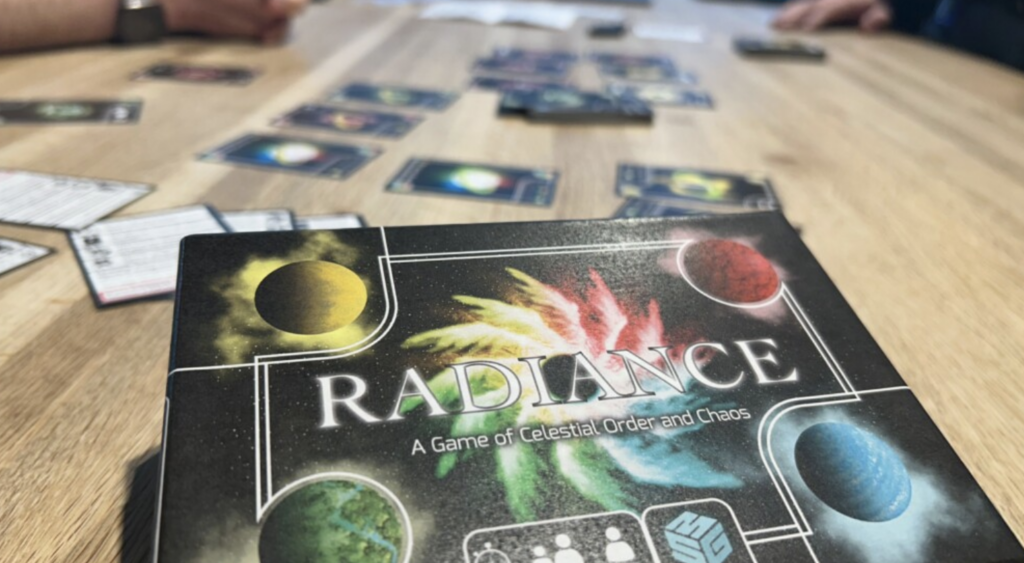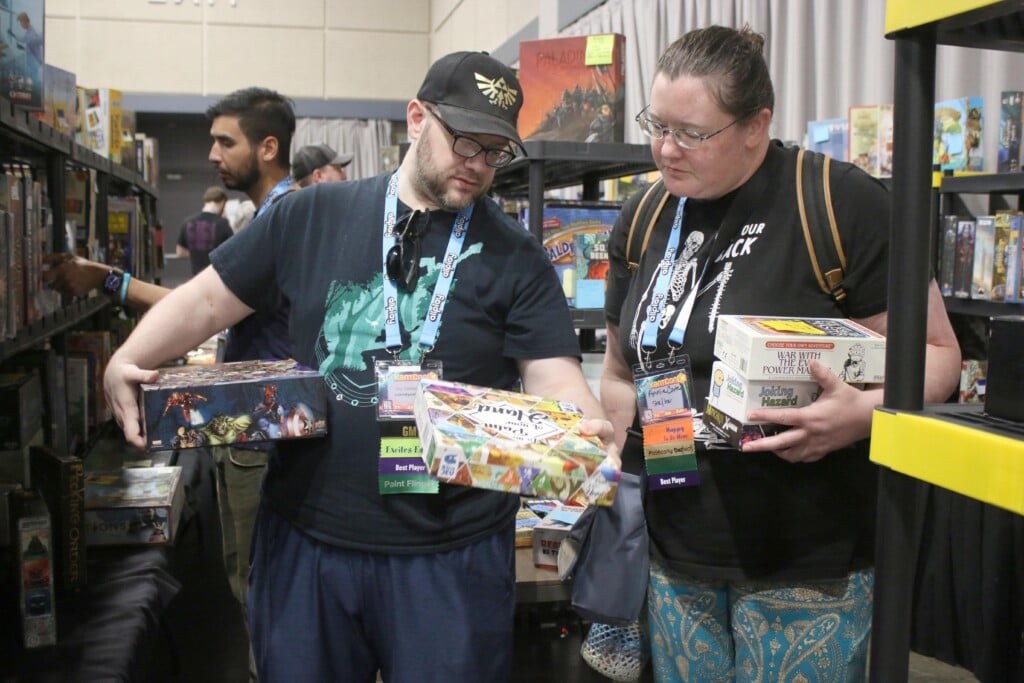Monster Closets: 1992’s Alone in the Dark pioneered 3D survival horror in low-polygonal glory
Monster Closets is a randomly-regular column where Brock Wilbur takes a trip back through the highs, lows, and generally bizarre elements of the survival horror video game genre. This is exceptional niche writing but hopefully funny to the outsider by the nature of just how sheerly unhinged some of these works of art come. Please enjoy.
Precious few titles in the backlog of historical horror games scare me like Alone in the Dark.
The 1992 Infogrames title was the very first 3D horror title, built on an engine that powered innumerable point-and-click adventures, but nothing on this scale. It remains the absolute godfather of modern horror, with titles like Resident Evil owing their existence to the work done here by director Frédérick Raynal.
My enthusiasm for finally taking on this title is matched only by my trepidation. It is an aged PC adventure with historically convoluted puzzle elements, and I am a frustrated thirty-something running low on patience for games in my busy life. Plus, I’ve seen what happens when I’ve tried to introduce friends to pop culture artifacts that are the godfathers of their genre and no one has ever held attention for Where Something Began if it is in any way less shiny and engaging than its modern descendants. I’ve always hated that in others, but what if I see where this begins and find it wanting?
Only one way to find out. And that’s because I was assigned this by my editor Stu in much the same way the protagonist, Edward, was assigned to go check out this spooky old house.
The intro sequence features Infogrames’ nearly patented voice-over performed well by an English-speaking actor, but putting the “em-fa-sys” on all the wrong words, exactly as a non-English speaking director might push them to do. It’s the story of Edward Carnby, a 1920’s detective in Louisiana who dictates his backstory of failure and debt. Already, I’m fascinated because the story grounds our character in a realistic and broken place that serves to explain why he would engage in this adventure, but without hinting that there is anything even remotely askew, let alone involving unholy creatures of the night. This is just some dude looking for a piano with a hidden compartment.
Totally normal stuff.
 (It is worth noting that you can play this game as either Edward or as Emily Hartwood, the niece in line to inherit the property. She plays exactly the same way as Edward and has the same skill sets. This is 1992. Even the Alone in the Dark series unlearns female representation. Ugh. She re-appears in Alone in the Dark 3 as an actress now? You know what? I’m not here to fight the lore of a game series I haven’t played.)
(It is worth noting that you can play this game as either Edward or as Emily Hartwood, the niece in line to inherit the property. She plays exactly the same way as Edward and has the same skill sets. This is 1992. Even the Alone in the Dark series unlearns female representation. Ugh. She re-appears in Alone in the Dark 3 as an actress now? You know what? I’m not here to fight the lore of a game series I haven’t played.)
There’s a sudden shift into the world of the 3D. Every portion of this introduction is edited and framed in one of the most dazzling displays of videogame storytelling I’ve ever seen. There’s a Mr. Toad-esque old-timey car speeding through a swampland, and then a decidedly boxy yet clearly human figure enters a mansion through a series of forced perspectives and I am here. for. it. You’re a mustachioed detective who seems to have more terrifying features than any monster I could expect the game to throw at us. The forced perspective changes constantly as you move through the hallways, shifting often between individual footsteps. Suddenly there’s a sequence in an attic or a basement (I’m already lost in this house) and godawful noises permeate the space. From a disorienting, distanced third-dimension view, I’m fighting the controls just as much as any monster AND NO I was wrong about that. A bird-like shrieking scribble broke through the window and killed me almost immediately.
Cool. Cool. I’m going to have to figure out these controls and fast.
After reloading, I blockade the window and then punch a zombie to death before he explodes in blood that then evaporates into the sky. I have a lot of questions already, mostly about gravity and bird monsters, but also why none of the creatures here seem to be attached to their bodies. No time though, as I have to dart about looking for items and breaking said items to find better items inside of them. For some reason, I have a saber that keeps breaking and aside from that, I have a mirror that I use to scare off two Draculas of some kind. There’s a haunted shade in one of these rooms and a suit of armor and oh my god this is just an entire haunted house come to life. I have no idea how to stop any of these beings. The game seems to imply a set of puzzles for each, but I am terrible at combat and even figuring out how to aim a weapon. Turning on a gramophone in my inventory is beyond me. You can kill almost none of these creatures directly and that feels very rewarding in a non-linear horror title.
By the time I hit a man-eating plant in a bathtub, I’m already at a loss for what I should be doing here besides running around screaming at everything I encounter. I have barely any sense of control over this easily killable man, and I cannot see anything that’s happening in the room around me. This is . . . exactly what I wanted.
My character drinks himself well again, and I start the slightly dreary process of trial and error in determining how to make it room to room. Occasionally running seems to wake up murderbeasts and other times walking too slow dooms me. There are notes detailing the haunting of the house by a recent suicide but I’m actually too afraid to read them because this game is old enough that maybe I’ll be eaten by darkness-bastard by accident. I get stuck on walls as often as I get murdered by paintings of cultural appropriation. This is a game from a particular time which defined that time; each and every choice is something I once praised another game for inventing.
Oops.
On top of everything else, there’s an inventory system that seems bizarrely limited in that individual arrows for a bow take up the same amount of space as an entire record player, but bullets are all in a shared location. I seem to keep collecting books, as I do in real life, and I’m not sure if any of these actually mean anything?
Later, in a dark room, I’ll use a False Book to open a hidden panel and take a haunted dagger and kill a poltergeist who looks like a playable character from the Super Nintendo brawler Clayfighter. A lot of these goblins seem to have a hard time chasing me out of the rooms they start in, but also some of these rooms go dark and it takes me way too long to figure out the lantern in-game, so I am getting very good at death. This includes swinging swords and shooting guns at creatures directly in front of me that I never seem to make contact with until they decide to eat me.
I find something called A Box of Shoes but it’s really a Shoe Box – but it’s really a Gun Holding Box so that’s a delight of translation. Shortly after, a room begins filling with smoke but I can’t tell because the smoke effect just appears to be draining the color from everything around me. It was such a disorienting effect that I run away twice. This game is exceptional at what it chooses to throw at the player because each moment feels like far too much but, when arranged logically, this is all easy to overcome. The adventure game elements are limited simply by how little logic exists in the first place. Hilariously, just after a moment of peak frustration here, I kill a pirate and pick up a key he was carrying. I am supposed to use the key on a door . . . right next to him.
Fine. Thanks for throwing me a bone here.
By far my least favorite part of the game begins here with a series of underground tunnels. The monsters are suddenly much larger and much more bewildering, including some kind of spider-rat that is also wearing glasses to indicate that it is blind, perhaps? I’m hating this part because it is overwhelmingly effective. The walls become flesh and suddenly I’m dealing with bird’s-eye views of elaborate underground ecosystems where darkness prevents me from knowing what I’m doing a solid quarter of the time. These are all functional, excellent choices.
Dragging this down is the sudden inclusion of a jump function that, based on the terrible functionality of the combat targeting, should let you know that you’re going to be accidentally jumping to your death instead of solving a number of puzzles. It’s only now that I notice that Mr. Carnby throwing a book at a wall makes
the exact same sound as Mr. Carnby punching a gigantic spider in the face. You find a gigantic Lovecraftian Old One down amongst some amphibious Frog Men and you burn them all to death. While the underground world begins to collapse, you have to make your way back through the entire system of corridors and catacombs. This includes the godforsaken jumping puzzles.
Jesus. Jesus, why? Can’t you just let the hero blow up the bad guy and call it good? No, you have to make him retrace every step of the entire game to this point, like some last-minute dare to the player to be good enough to deserve the credit screen. What do you get for the effort that adds almost a third to the game’s runtime? Edward jumps for joy. Your character jumps for joy. Then hails a car driven by a laughing zombie.
The End.
Holy cow. That was one of the most pleasurable trips into gaming past I’ve undertaken, marred only by a final act that exists entirely after the final act. For a huge chunk of this playthrough, I found it unconscionable how much of this game has been ripped off piecemeal by others. Now I get why. Anyone burned that badly deserves their revenge.
As a post-script, there is footage online of a high-definition remake of the game that was abandoned but which sought to remake this title in the style of Alan Wake. The forced perspectives remain, and the initial attic scene with its possibility for fight or flight or puzzle-solving really shines here, especially when a late-2000s game demo is passing off 1992 game design as innovative.
That’s perhaps the best summary one can give for the experience here. The core ideas of Alone in the Dark function with just as much satisfaction as they did around the time I was born, and new packages are delightful but entirely unneeded. This is what excited me so much about this style of game, and after a streak of some unfortunate titles in this series, this has been a reminder of what horror game origins can give us even now.
Thanks, Edward.







